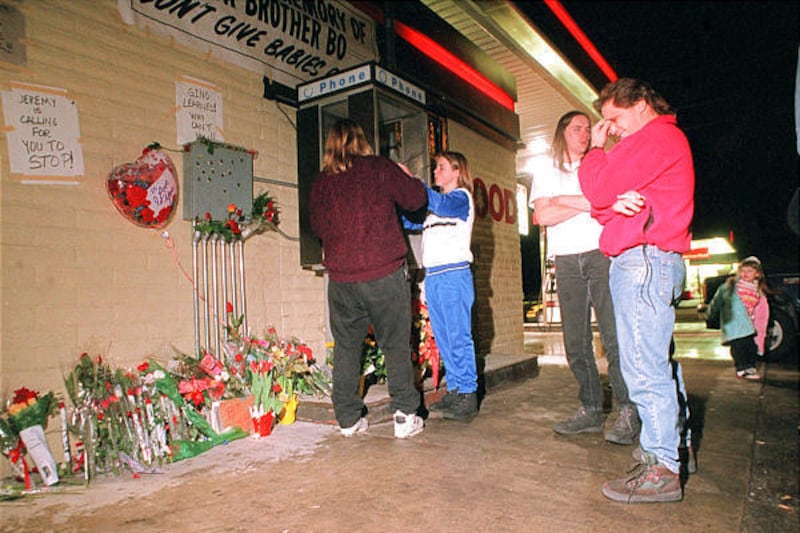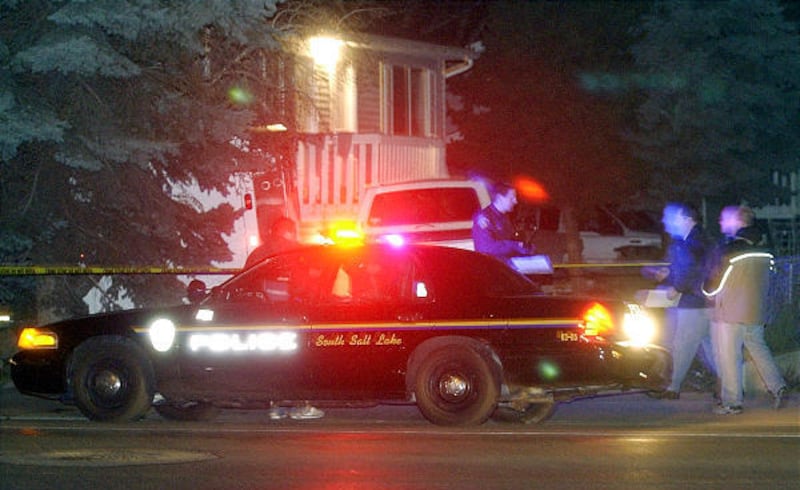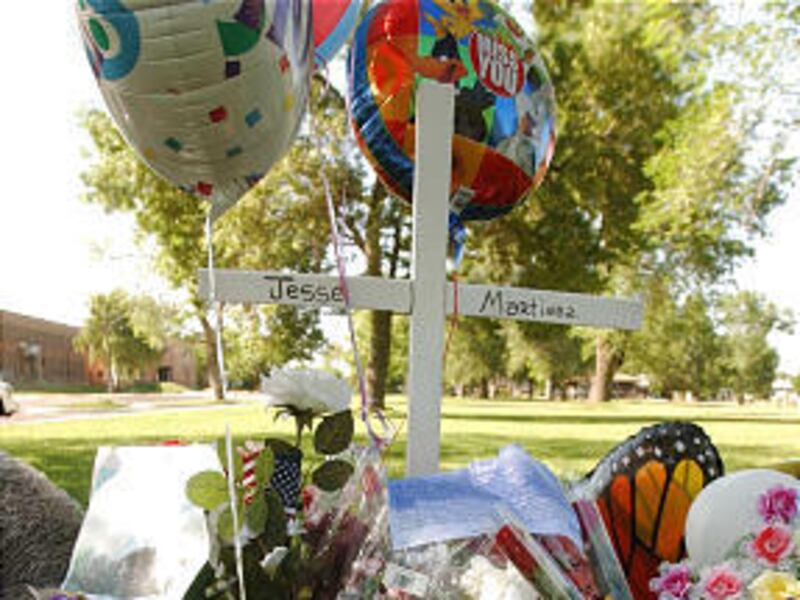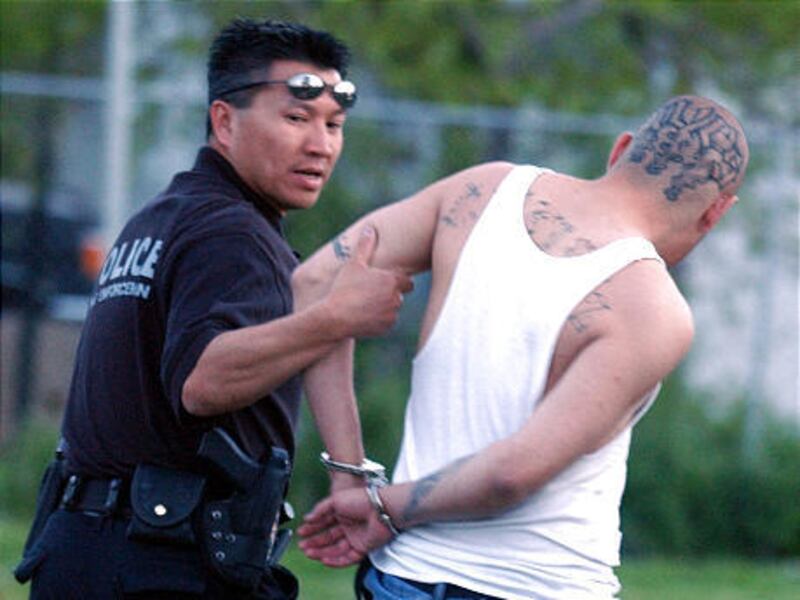They were episodes of violence that shocked the state, caught the attention of the national media and prompted a Utah senator's pledge to secure millions to stop the gang killings.
On Sept. 1, 1993, 17-year-old Aaron Chapman was shot and killed while leaving a concert at the Triad Center Amphitheatre. Asi Mohi, a 17-year-old football star at West High School, was arrested and eventually convicted of the murder.
Just two weeks later on Sept. 15, 1993, a 20-year-old man was shot at the Utah State Fair. The victim survived. Two 16-year-old boys, one already known as a hard-core gang member and the other known to associate with gangs, were arrested.
Suddenly, quiet Salt Lake City, where serious gang problems were only heard about in the headlines of newspapers of other states, was now facing what some were calling a gang crisis.
After the state fair shooting, then-Salt Lake Police Chief Ruben Ortega announced he was cracking down on gangs before they became a major problem. The next day, Gov. Mike Leavitt announced that during an upcoming special session of the the Legislature, he would ask lawmakers to address the gang issue. Salt Lake Mayor Deedee Corradini proposed several new city ordinances to curb gun violence.
The gang-related shootings of 1993 received so much attention that the "NBC Nightly News" sent a crew to Salt Lake as part of a series on youth violence in surprising places.
The violence, however, continued. On Feb. 3, 1994, Anthony Martin Archuleta, 16, shot and killed Roland "Bo" Zahorka during a dispute over a pay phone. That month, Sen. Orrin Hatch, R-Utah, pointed to Zahorka's death as an example of why federal funding was needed to fight gangs.
Earlier this month, Archuleta went before the State Board of Pardons for a parole hearing.
It was due in part to the Archuleta murder that several significant laws aimed at curbing gang violence, many of which are still used heavily by law enforcement and prosecutors today, were created.
This fall will mark 15 years since that time when the issue of street gangs caught the full attention of state and city leaders and the community.
Bloodshed and heartache
The crackdown on gangs in the early '90s helped slow their growth in Salt Lake, said Sgt. Scott Teerlink, head of the Salt Lake City Gang Unit, but not the violence. Back in the early '90s there were lots of drive-by shootings in which houses were shot up, but few people were injured, said Lt. Steve Anjewierden, head of the Metro Gang Unit. Today, there are more drive-by shootings that result in serious injury or death.
Between 1993 and 1998, Utah had its highest rate of homicide ever logged.
"Some gang members called it the 'Blood Olympics,'" said Salt Lake Deputy District Attorney Vince Meister who leads the team that prosecutes gang-related crimes. "In the mid- to late '80s we were seeing (gang) problems. But by the mid-'90s, communities could no longer ignore them. This wasn't just tagging."
Some of the more high-profile gang-related incidents of the past 15 years include:
• Nicholas Dirkson, 17, was shot and killed Nov. 18, 1995, by 25-year-old Phokham Keomanivong outside a KFC restaurant in Midvale. Keomanivong remained on the run for nearly ten years before committing suicide.
• Bethany Hyde, 16, was shot and killed Nov. 7, 1998, in a case of mistaken identity in West Valley City. Steven Keomanivong, Phokham's brother, was arrested, convicted and sentenced to 35 years in prison.
• Jesse Gallegos, 12, was killed by a stray bullet from a gang-fight while attending a baby shower with his family at Monroe Park in Ogden. Police later identified his killer and said he died in a Guatemala shooting during a fight over a woman.
• A 4-year-old boy was shot outside the Utah Fun Dome in Murray March 29, 2003, after a 16-year-old gang member randomly opened fire hoping to hit rival gang members. The boy survived. A total of six people were injured. David Van was charged as an adult under the Serious Youth Offender Act and remains in prison.
• A melee involving members of the same gang in Salt Lake's Avenues in 2005 resulted in one man being shot to death and two others injured. A 17-year-old boy was believed to be the triggerman in the homicide.
Over the years, gangs have grown more organized, increasingly involved in the drug trade and do less to attract attention, Anjewierden said. In contrast to the days when members flew their colors to boast of alliances, Anjewierden said gang members now try to blend in so they can continue to ply their drugs.
"They're more organized, better networked now. They figured out the strength in numbers deal," he said.
But as gangs have evolved, so have police worked to adopt new tactics to counter their criminal activity in communities.
"Back in the day, gang members used to call Salt Lake 'Disneyland,'" said Sgt. Saul Bailey, a member of the Metro Gang Unit for the past decade.
Youth gang members, in particular, felt they could run amok without fear of many, if any, serious consequences.
Ganging up on gangs
But it wasn't long after the Mohi and state fair shootings that local, state and even federal law enforcers and prosecutors began working more as a team to solve the gang problem.
"One of the best things we've done is improve communication," Anjewierden said. "It's a multi-tiered approach. It's one of the smartest things we did."
The idea of sharing information led to the formation of SHOCAP, or the Serious Habitual Offender Comprehensive Action Program, in Salt Lake County in the late '90s. SHOCAP focuses its attention on repeat juvenile offenders by using a statewide database to share information among courts, probation and parole officers, and schools, and by holding monthly meetings.
Meister said that between 1993 and 1996 was when the system was really revamped to get tough on juvenile gang members.
The Serious Youth Offender Act, another tool used to combat gang crime, allows prosecutors to charge some habitual juvenile lawbreakers as adults.
Before the Serious Youth Offender Act, juveniles would claim responsibility for violent crimes committed by adults because they knew the penalties would be significantly less severe, he said. Adult gang members would commit a crime and then hand the gun off to a juvenile.
That changed with Utah's passage of the act, which over the years has resulted in multiple young, violent offenders being prosecuted as adults.
Just Friday, 16-year-old Diego Mora appeared in Ogden's 2nd District Court to face charges of first-degree felony murder and aggravated robbery. Weber County prosecutors said Mora shot and killed a 22-year-old man to elevate his status in a gang. He was 15 at the time.
Other changes over the past 15 years include enhancements for crimes committed in groups, drive-by shooting enhancements and changing the gun enhancement statute to "dangerous weapon" enhancement.
"We're always adapting, they're always adapting," said Meister.
Overall, efforts to combat gang crime over the past 15 years have had an impact, he said.
"Considering in that period of time the population in this valley has roughly doubled, but the number of cases, the number of felonies, haven't doubled," he said. "Back when we were starting, some juveniles thought it was cool to hang out with gang members, living through them vicariously. Through aggressive prosecution, these youths realized, 'This isn't for me.'"
The majority of people committing gang crimes now are the ones with lengthy criminal histories and not first-time offenders, Meister said.
"We have a lot more tools now," Bailey said. "The size of the Metro Gang Unit has probably doubled since those days."
Today, the "team" of law enforcers keeping the problem in check includes the U.S. Marshal's Office, Youth Corrections, ATF as well as other local, state and federal agencies.
Prosecutors also attacked gang activity with the Racketeer Influenced and Corrupt Organizations Act, or RICO, using it for the first time in 2002 to bring down a leader of a local street gang as well as nine of his followers. The same act was applied the next year to prosecute members of a white supremacist gang, and in 2006, a federal grand jury indicted 14 members of the TOP gang, a violent street gang with a decadelong history of murders, shootings and drug dealing. A TOP member was responsible for the Hyde murder.
Prevention, intervention
Despite efforts to curtail gangs, authorities say they see a dangerous trend among younger children exploring the lifestyle sooner.
"Seems members are definitely becoming a lot younger," Bailey said. "Their exposure to gangs and the gang lifestyle starts a lot younger. We're starting to see now generational gang members."
To combat this, officials across the state have taken the three-pronged approach to fixing the problem: suppression, education and diversion.
Back in in the early '90s the Salt Lake County Sheriff's Office assigned two deputies on the west side patrol unit to work full-time with gangs, both in the area of gaining intelligence and creating education programs.
"In a couple of years, everyone wanted to be in the gang unit. It was dynamic and it was effective. The value was immediately recognized," Anjewierden said.
Educating juveniles and providing them with after-school options so they don't become involved with gangs has become another key in battling the problem.
"The gang problem is evolving. We'd be dead if we didn't evolve with it," Bailey said.
The next step in that evolution may come in the form of state legislation.
While programs like SHOCAP and laws like the Serious Youth Offender Act have been effective, Teerlink said he would like Utah lawmakers to take it to the next level — to pass laws similar to those in California where simply associating with a criminal street gang is illegal.
"In most of the states where these laws are being adopted, the gang problem is so bad that the community has already had enough and is demanding change," he said. "We don't have near the problem a lot of those other areas have. But we need to get the legislation in place now to prevent the problem from coming here."
Some of those steps already appear to be happening this legislative session. This month, the Utah Senate approved SB75, a bill that would allow police to arrest gang members for hanging out in "gang-free zones." The Senate also approved SB65, which would make it a misdemeanor to join a street gang or to try to prevent a member from leaving a gang.
E-mail: preavy@desnews.com





